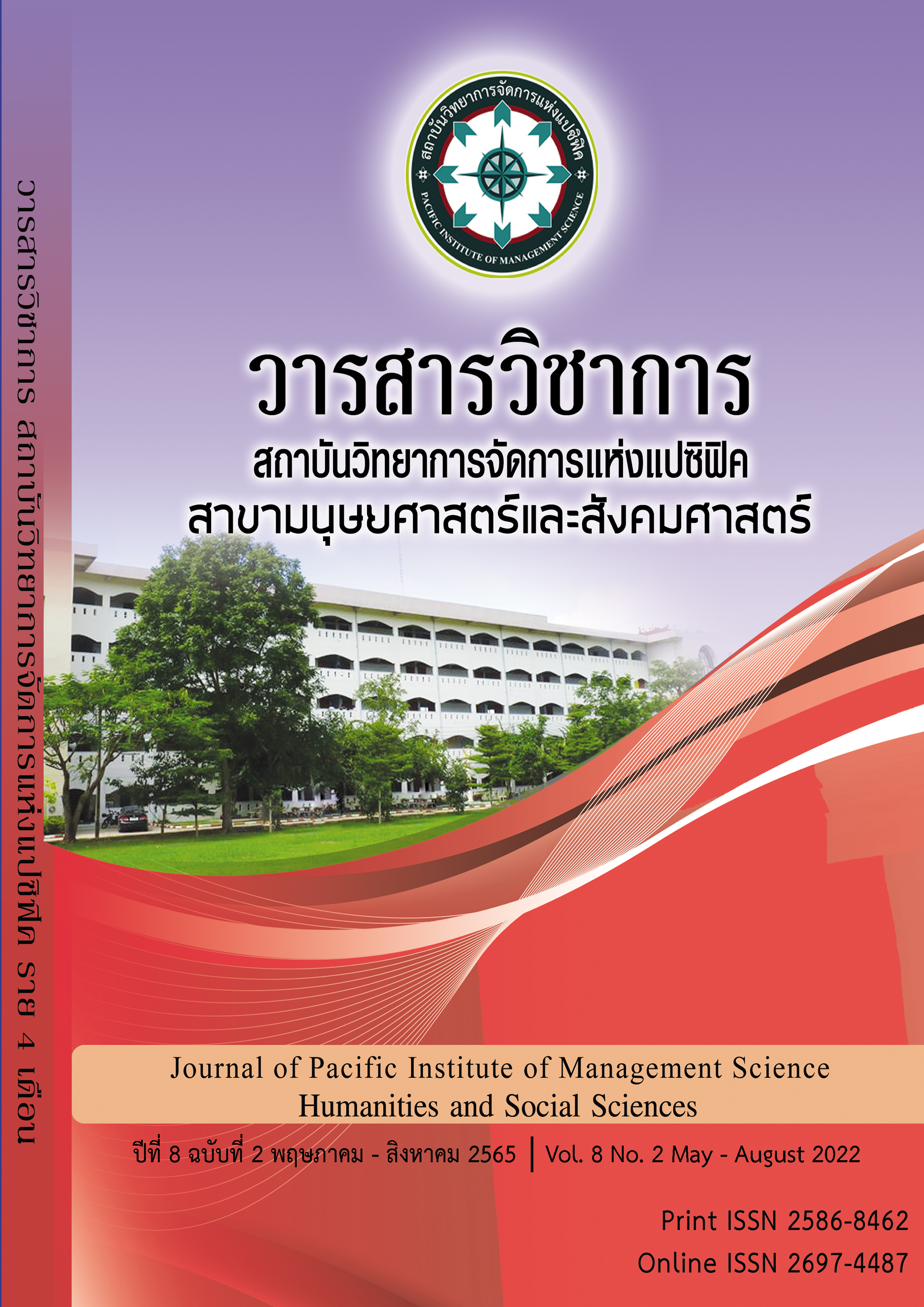Consonant and Vowel Sounds of Anger Expressions in King Rama VI's Chan Literary Work
Keywords:
Consonant and Vowel Sounds, Anger, Chan Literary WorksAbstract
The study of consonant and vowel sounds of anger expressions in King Rama VI’s Chan literary work aimed to study the characteristics of consonant and vowel sounds as well as the syllable structure expressing the characters’ anger. The findings revealed that the most frequent consonant onset was the single consonants arranged from the most frequently found as follows: plosive, nasal, fricative, semi-vowel, alveolar tap, and lateral respectively while the most frequently initial consonant clusters were the first plosive consonant followed by /r/ sound, followed by /l/ and /w/ sounds. Regarding the final consonants, it was found that the most frequent final consonants appeared in the anger expressions of Chan literary work included nasal and semi-vowel final consonants, followed by stop consonants while the most frequent vowel sounds were single vowel in which the mid vowel was found the most, followed by back vowel, front vowel, and low-mid vowel respectively. Regarding the diphthongs, the most frequently found was /ua/ sound, followed by /ia/ and /ɯa/ respectively. For the syllable structure, the smooth syllable was found more frequently than the checked syllable. The most frequent smooth syllable structure was c (c) v (v) n, followed by c (c) vv while the most frequent checked syllable structure was c (c) v, followed by c (c) vs, and c (c) vvs respectively. The findings from the analysis showed the word formation to express anger in the literary works of King Rama VI in which the smooth syllable was used with single initial consonant possessing the plosive characteristic.
References
กาญจนา นาคสกุล. (2545). ระบบเสียงภาษาไทย ใน บรรทัดฐานภาษาไทย เล่ม 1. กาญจนา นาคสกุล (บก.) หน้า 14-44. กรุงเทพฯ : คุรุสภาลาดพร้าว.
ชมัยพร แสงกระจ่าง. (2516). กรองภาษาและวรรณกรรม ประชุมบทความเชิงวิชาการแขนงภาษาและวรรณกรรมไทย ชุมนุมวิชาการอักษรศาสตร์ จุฬาลงกรณ์มหาวิทยาลัย. กรุงเทพฯ : ศรีเมืองการพิมพ์.
ชิต บุรทัต. (2544). สามัคคีเภทคำฉันท์. พิมพ์ครั้งที่ 3. กรุงเทพฯ : ไพลินบุ๊คเน็ต..
นววรรณ พันธุเมธา. (2513). การใช้ภาษา. กรุงเทพฯ : คุรุสภาลาดพร้าว.
พัธนี โชติกเสถียร. (2545). เสียงในภาษาไทย 2 ใน ภาษาไทย 3. ศรีสุดา จริยากุล (บก.). หน้า 245-282. นนทบุรี : มหาวิทยาลัยสุโขทัยธรรมาธิราช
มงกุฎเกล้าเจ้าอยู่หัว, พระบาทสมเด็จพระ. (2505). สกุนตลา มัทนะพาธา ท้าวแสนปม ประมวลสุภาษิต. กรุงเทพฯ : โพธิ์สามต้น.
ราชบัณฑิตยสภา. (2560). พจนานุกรมศัพท์ภาษาศาสตร์ (ภาษาศาสตร์ทั่วไป). กรุงเทพฯ : เอบิช อินเตอร์กรุ๊ป.
วราภรณ์ บำรุงกุล. (2537). ร้อยกรอง. กรุงเทพฯ : ต้นอ้อ.
วิยะดา ศิริชนะทรัพย์. (2562). ความสัมพันธ์ของเสียงพยัญชนะและสระกับลีลาพิโรธวาทังและสัลลาปังคพิสัย. ใน รายงานการประชุมฉบับสมบูรณ์ วิวิธวิจัยภาษาไทย ครั้งที่ 2. นครปฐม : คณะอักษรศาสตร์
Downloads
Published
Issue
Section
License
Copyright (c) 2022 Pacific Institute of Management Science

This work is licensed under a Creative Commons Attribution-NonCommercial-NoDerivatives 4.0 International License.
บทความที่ได้รับการตีพิมพ์เป็นลิขสิทธิ์ของ สถาบันวิทยาการจัดการแห่งแปซิฟิค
ข้อความที่ปรากฏในบทความแต่ละเรื่องในวารสารวิชาการเล่มนี้เป็นความคิดเห็นส่วนตัวของผู้เขียนแต่ละท่านไม่เกี่ยวข้องกับสถาบันวิทยาการจัดการแห่งแปซิฟิค และคณาจารย์ท่านอื่นๆในสถาบันฯ แต่อย่างใด ความรับผิดชอบองค์ประกอบทั้งหมดของบทความแต่ละเรื่องเป็นของผู้เขียนแต่ละท่าน หากมีความผิดพลาดใดๆ ผู้เขียนแต่ละท่านจะรับผิดชอบบทความของตนเองแต่ผู้เดียว







